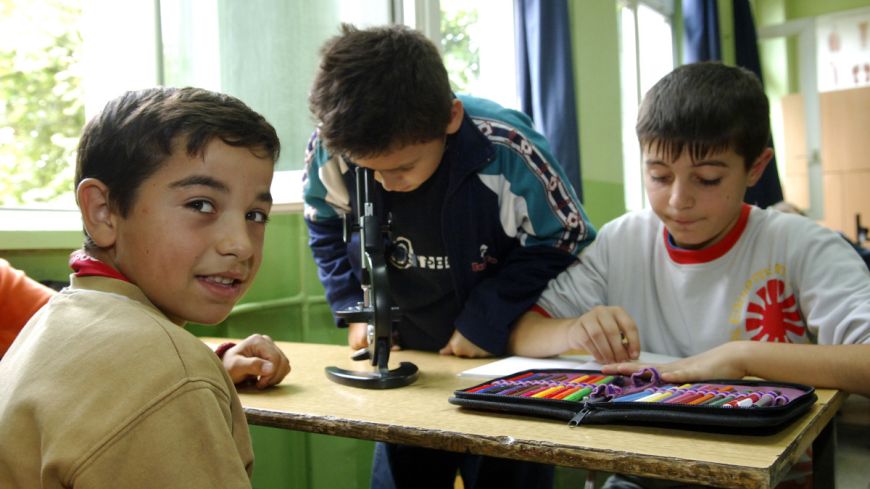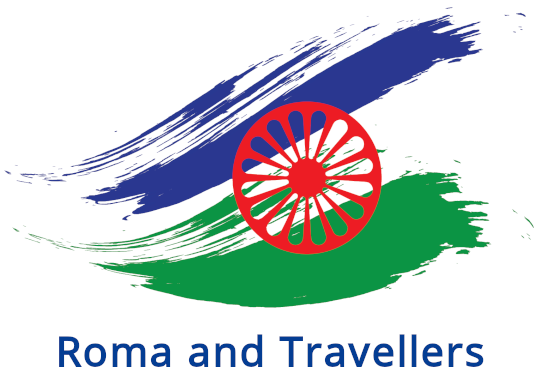Culture / Education
The future of Roma communities hinges very much on the education of their children, as education is a key factor in understanding modern reality and in social integration. The activities of the Council of Europe in this field are to support and guide the integration of Roma communities into the mainstream education system.
After years of work, a range of products was produced which show the concrete manner of the Council of Europe’s contribution to improving access to education for Roma.
Some examples:
Inclusive Schools: Making a Difference for Roma children" (INSCHOOL) is a joint project of the European Union and Council of Europe focusing on inclusive education for Roma children.The project is based on the assumption that it is not enough to draw up policies of change. Change needs to be reflected at school level and in the environment of the children. There is often a gap between the statements and requirements in policy documents and the reality in which these need to be implemented. Practice has proven that for schools to overcome the rift of exclusive teaching and learning approaches, they have to re-examine what they teach, how they teach and how they assess learners’ performances. A real link with non-formal education and the support for families and communities is necessary to create a shift in education - for the benefit of all learners.
Teaching kit for Roma pre-school children. This kit prepares Roma and Traveller children who have not attended nursery school and are neither ready nor sufficiently mature for the first primary school class to start school so that they do not fall too far behind.
Guide for Roma school mediators and training modules for mediators. Positions such as that of a Roma mediator or school assistant can be made more effective by promoting high-quality initial training geared to the needs on the ground. This Guide contains an occupational profile, training modules for mediators and other essential practical information.
Teaching material suitable for use by Roma and non-Roma teachers working with classes made up of both Roma and other children. This material, in the form of publications or sets of educational fact sheets covering a number of topics, such as history, culture, language, will foster mutual understanding of differences, which is the basic principle underlying the intercultural approach. It can be used in both formal education and non-formal educational settings such as cultural centres or museums of Roma culture and history. Some of this material can be used in the community by children and their parents.
The Roma Genocide. This work is done in co-operation with OSCE/ODIHR. It comprises a database on this period of Roma history, with a virtual library of the best-known and most useful publications, and an interactive map on which countries can indicate their special/distinctive features at national level. The website also provides information on curricula, available teaching materials, school textbooks, places of remembrance, and innovative practices introduced by ministries, civil society, international organisations, museums and schools.
Standard-setting tools for the teaching and learning of the Romani language were developed in view of the crucial importance of the issue of Roma education throughout Europe and in the context of the Council of Europe’s comprehensive approach to Roma and Travellers issues. In response to the need expressed by a number of member states for curriculum guidelines to ensure high-quality provision in the Romani language, the Language Policy Division of the Council of Europe has developed and published a Curriculum Framework for Romani and two European Language Portfolio (ELP) models for Romani, accompanied by a Teacher Handbook.
- Recommendation CM/Rec(2020)2 of the Committee of Ministers to member States on the inclusion of the history of Roma and/or Travellers in school curricula and teaching materials
- Recommendation CM/Rec(2009)4 of the Committee of Ministers to member states on the education of Roma and Travellers in Europe
- Recommendation Rec(2000)4 of the Committee of Ministers on the education of Roma/Gypsy children in Europe
Education
- Thematic report on Roma schools mediators and assistants (Lithuania, Latvia, Moldova Rep., Norway, North Macedonia, Poland, Portugal)
- Thematic report on school attendance for Roma children, in particular Roma girls (Finland, Latvia, Norway, Sweden)
- Thematic report on school drop out/absenteeism of Roma children (Netherlands, Hungary, Spain, Sweden)
- Thematic report on inclusive education for Roma children (Czech Republic, Slovak Republic, Hungary, Slovenia, United Kingdom)
- Thematic report on inclusive pre-school education for Roma children (Czech Republic, Hungary, Latvia, North Macedonia, Poland)
- Thematic report on vocational education and training for Roma (Poland, Bosnia and Herzegovina, Finland, North Macedonia, Turkey)
- Thematic report on the effective enrolment and attendance of Roma children throughout compulsory school education and the added value of vocational education for Roma youth (Republic of Moldova, Bosnia and Herzegovina, Greece, Hungary, the Netherlands, Poland, Ukraine)
Host countries in bold
Scolarisation of Roma Children
Language, History and Culture
- Thematic report on the promotion and protection of languages spoken by Roma (Croatia, Austria, Hungary, Romania, Slovak Republic)
- Thematic report on the inclusion of Roma history in textbooks and school curricula (Slovak Republic, Czech Rep., Hungary, Moldova Rep., Romania)
- Thematic report on governmental support for the promotion of Romani arts and culture and holocaust remembrance, as well as related international co-operation (Germany, Austria, Belgium, Italy, Latvia, Republic of Moldova, Slovak Republic, Switzerland and Ukraine)
- Thematic report on the protection, preservation and teaching of languages spoken by Roma, Boyash, Sinti, Kaale and Yenish (Austria, Bosnia and Herzegovina, Czech Republic, Finland, Germany, Poland, Slovak Republic, Slovenia and Switzerland)
Host countries in bold





